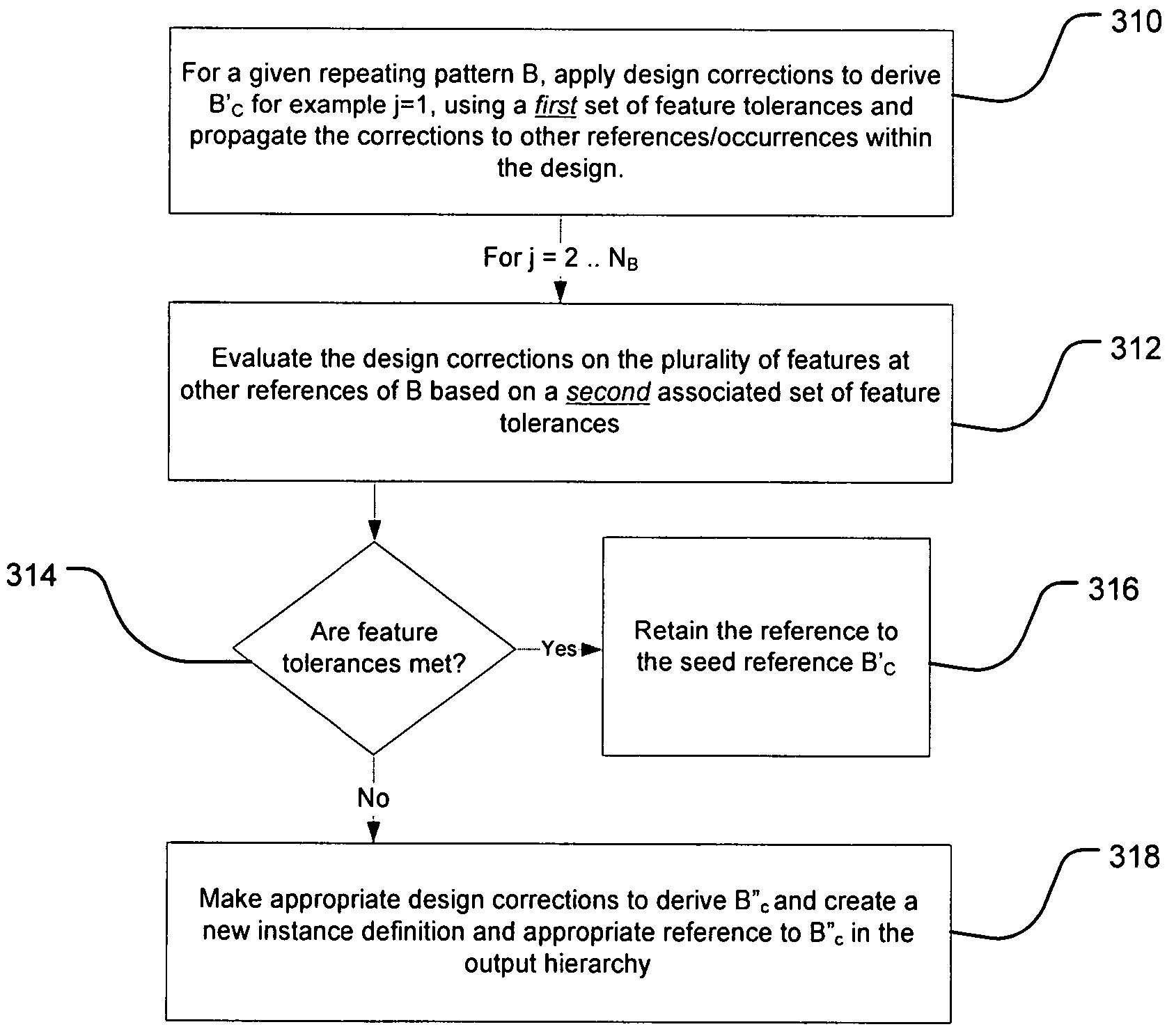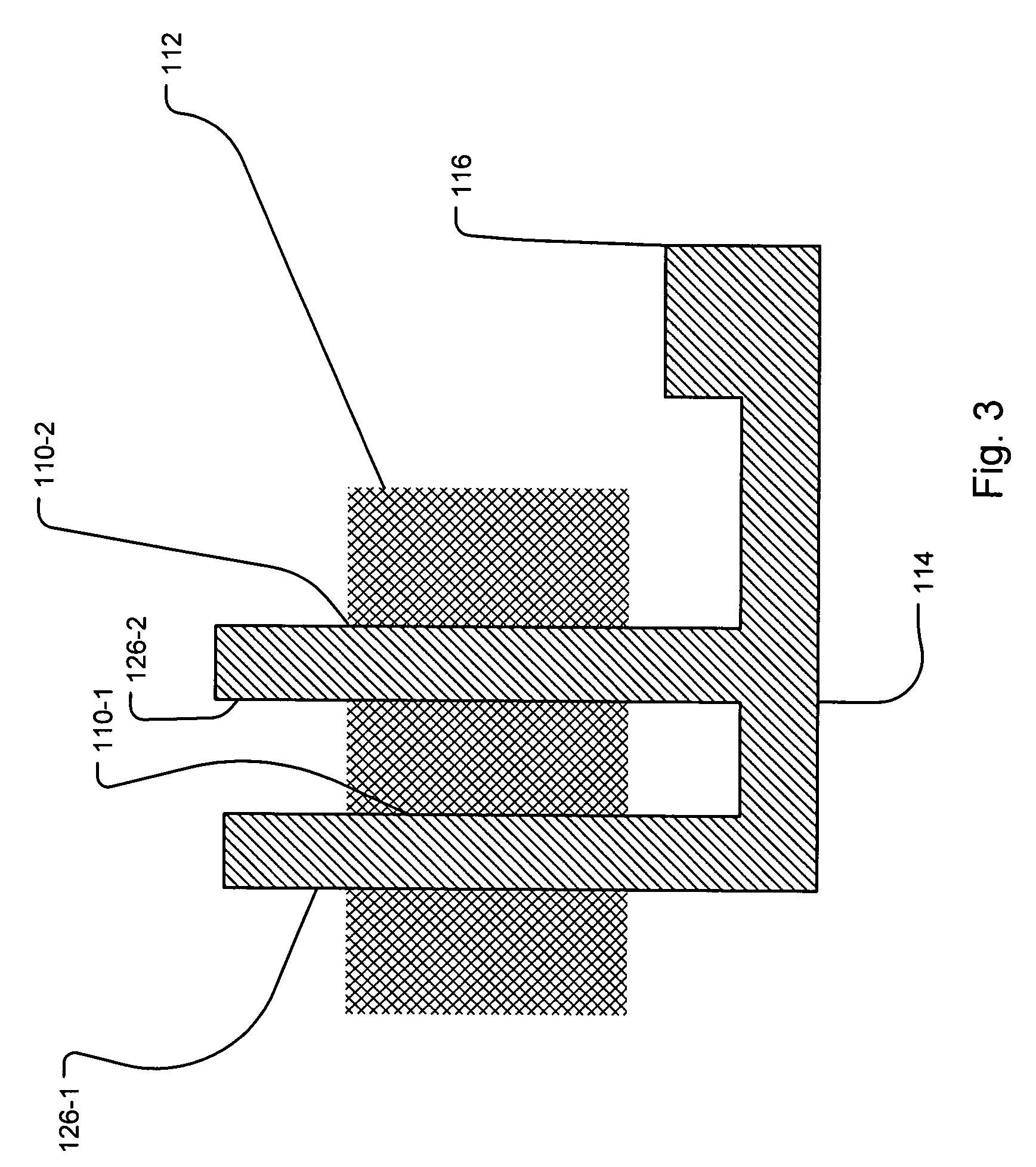Method and system for managing design corrections for optical and process effects based on feature tolerances
a technology of feature tolerances and design corrections, applied in the field of fabricating integrated circuits, can solve the problems of affecting the process, difficult for the projection lens to reproduce the high spatial frequency components, and complex interaction of the electric fields of adjacent objects, so as to avoid post-correction compaction and sacrifice accuracy.
- Summary
- Abstract
- Description
- Claims
- Application Information
AI Technical Summary
Benefits of technology
Problems solved by technology
Method used
Image
Examples
Embodiment Construction
[0052]FIG. 1 illustrates the schematic arrangement of multiple chips within a field and the multiple exposures of the field across a wafer.
[0053]Specifically, in the design, the root cell often exists at the level of the chip or field F. Within the field there may be multiple placements of chips or functional structures within chips such as chip-level cells Chip 1, Chip 2, Chip 3. Within each of these child cells Chip 1, Chip 2, Chip 3 are repeating patterns. These repeating patterns are often repeated many times within each chip Chip 1, Chip 2, Chip 3 at different coordinates. The patterns are often also rotated, reflected, and possibly scaled at each placement. In one case, the repeating patterns are consolidated across the field for a field wide correction based on tolerances. In another aspect, corrections are incorporated within a single chip based on field position and propagated to other chips within the field, which contain the same repeating patterns and their suitability v...
PUM
 Login to View More
Login to View More Abstract
Description
Claims
Application Information
 Login to View More
Login to View More - R&D
- Intellectual Property
- Life Sciences
- Materials
- Tech Scout
- Unparalleled Data Quality
- Higher Quality Content
- 60% Fewer Hallucinations
Browse by: Latest US Patents, China's latest patents, Technical Efficacy Thesaurus, Application Domain, Technology Topic, Popular Technical Reports.
© 2025 PatSnap. All rights reserved.Legal|Privacy policy|Modern Slavery Act Transparency Statement|Sitemap|About US| Contact US: help@patsnap.com



